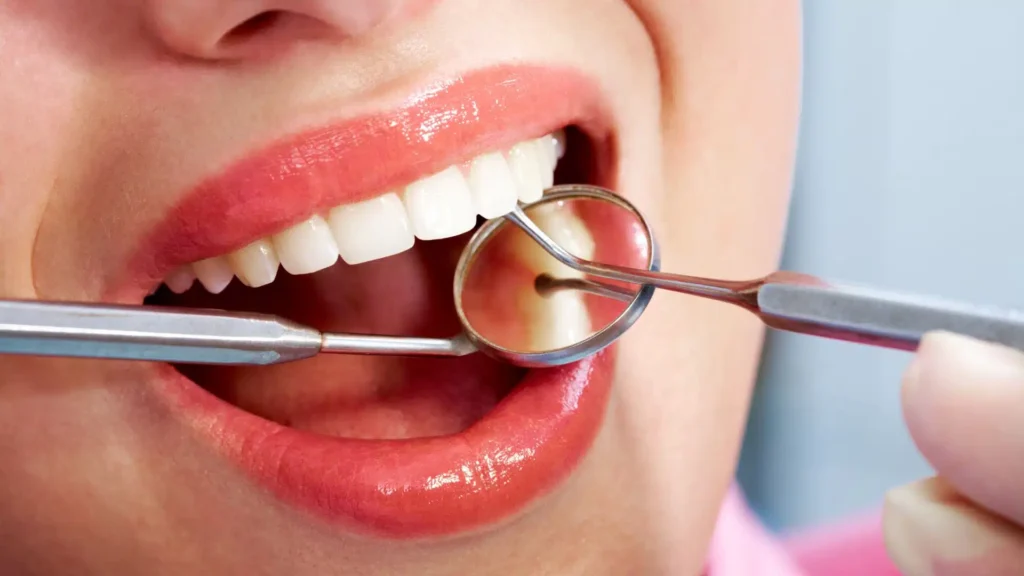
Dental health plays a crucial role in overall well-being. A healthy mouth is not only essential for eating and speaking but also contributes to self-confidence and social interactions. Neglecting oral hygiene can lead to various problems, including cavities, gum diseases, and even systemic health issues like heart disease and diabetes. This article explores the importance of 拔牙 care, common oral health problems, treatments, and recent advances in dentistry.
Importance of Oral Health
Good oral hygiene prevents dental diseases and contributes to overall health. Poor dental health is linked to serious conditions like cardiovascular diseases, respiratory infections, and diabetes. Additionally, gum disease has been associated with pregnancy complications such as preterm birth and low birth weight.
Key Benefits of Good Oral Hygiene
- Prevents Cavities and Gum Disease – Regular brushing and flossing remove plaque, which can lead to tooth decay and gum infections.
- Boosts Confidence and Self-Esteem – A healthy smile enhances appearance and confidence.
- Reduces the Risk of Systemic Diseases – Oral bacteria can enter the bloodstream and cause infections in other parts of the body.
- Improves Digestion – Proper chewing, aided by strong teeth, helps break down food for better digestion.
- Saves Money on Expensive Treatments – Preventive care reduces the need for costly dental procedures.
Common Dental Problems
1. Cavities (Tooth Decay)
Cavities are caused by plaque, a sticky film of bacteria that produces acids and erodes tooth enamel. Symptoms include tooth sensitivity, pain, and visible holes in the teeth.
Prevention & Treatment:
- Brushing twice a day with fluoride toothpaste
- Flossing daily
- Reducing sugar intake
- Getting dental fillings or crowns if decay is severe
2. Gum Disease (Periodontal Disease)
Gum disease occurs when plaque builds up under the gum line, leading to inflammation, bleeding, and potential tooth loss.
Prevention & Treatment:
- Regular dental cleanings
- Proper brushing and flossing
- Scaling and root planing (deep cleaning)
- Antibiotics or surgery for severe cases
3. Bad Breath (Halitosis)
Chronic bad breath may be a sign of gum disease, cavities, or an underlying health condition.
Prevention & Treatment:
- Brushing and flossing regularly
- Drinking plenty of water
- Using mouthwash
- Treating underlying dental infections
4. Tooth Sensitivity
Tooth sensitivity occurs when enamel wears down, exposing the underlying dentin. This makes teeth more sensitive to hot, cold, or sweet foods.
Prevention & Treatment:
- Using desensitizing toothpaste
- Avoiding acidic foods and beverages
- Applying fluoride treatments
- Getting dental bonding or crowns for severe cases
5. Tooth Loss
Tooth loss results from severe decay, gum disease, or trauma. It can affect chewing ability and speech.
Prevention & Treatment:
- Practicing good oral hygiene
- Wearing mouthguards during sports
- Replacing lost teeth with implants, bridges, or dentures
6. Oral Cancer
Oral cancer affects the lips, tongue, gums, and throat. Symptoms include sores, lumps, and difficulty swallowing.
Prevention & Treatment:
- Avoiding tobacco and excessive alcohol consumption
- Regular dental check-ups
- Surgery, radiation, or chemotherapy for treatment
Dental Treatments and Procedures
1. Professional Teeth Cleaning
Dentists use special tools to remove plaque and tartar that regular brushing cannot eliminate. This prevents cavities and gum disease.
2. Fillings
Dental fillings restore damaged or decayed teeth using materials like composite resin, amalgam, or ceramic.
3. Root Canal Therapy
A root canal is necessary when infection reaches the pulp of the tooth. The procedure removes infected tissue and seals the tooth to prevent further infection.
4. Tooth Extractions
Severely damaged or decayed teeth may need to be extracted to prevent further oral health issues.
5. Dental Crowns
Crowns cover damaged teeth, restoring their shape, size, and strength. They are made from materials like porcelain, metal, or zirconia.
6. Dental Implants
Implants replace missing teeth with artificial roots and crowns, offering a long-lasting and natural-looking solution.
7. Braces and Orthodontic Treatments
Braces, clear aligners (e.g., Invisalign), and retainers help straighten teeth and correct bite issues.
8. Teeth Whitening
Professional teeth whitening treatments remove stains and discoloration, improving the brightness of a smile.
Advances in Dentistry
1. Laser Dentistry
Laser technology is used for procedures such as cavity detection, gum disease treatment, and teeth whitening. It minimizes pain and speeds up healing.
2. Digital Dentistry
3D scanning and digital impressions improve accuracy in dental procedures like crowns, bridges, and dentures.
3. AI in Dentistry
Artificial intelligence helps with diagnostics, treatment planning, and predictive analysis of oral health conditions.
4. Biocompatible Materials
New materials like zirconia and bioactive glass improve the durability and aesthetics of dental restorations.
5. Stem Cell Research
Researchers are exploring the use of stem cells for tooth regeneration, which could potentially eliminate the need for implants in the future.
How to Maintain Good Oral Health
- Brush and Floss Daily – Use fluoride toothpaste and floss to remove food particles and plaque.
- Visit the Dentist Regularly – Schedule check-ups and cleanings every six months.
- Eat a Healthy Diet – Limit sugary foods and consume calcium-rich foods for strong teeth.
- Avoid Tobacco and Excessive Alcohol – These increase the risk of gum disease and oral cancer.
- Stay Hydrated – Drinking water helps wash away bacteria and food particles.
Conclusion
Dental health is essential for overall well-being. Preventive care, regular dental check-ups, and modern treatments ensure strong, healthy teeth and gums. Advances in dentistry continue to improve patient outcomes, making dental care more effective and accessible. By prioritizing oral hygiene, individuals can maintain a beautiful smile and prevent serious health problems.
